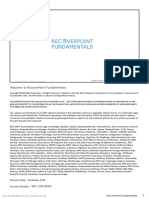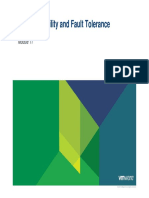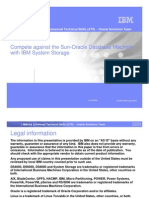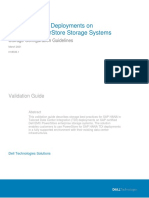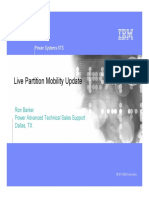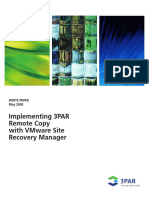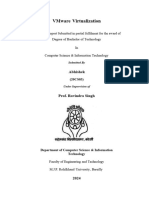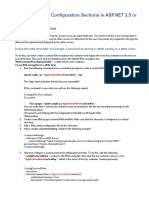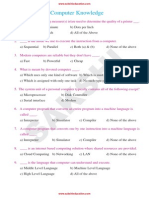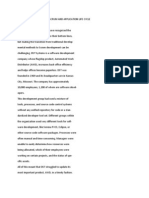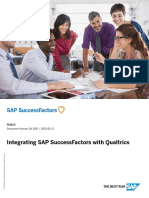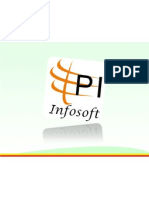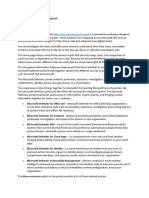Virtualization Overview
Module 1
�Prerequisites
System administration experience on Microsoft Windows or Linux operating systems Good knowledge on Networking and TCP/IP Knowledge on Storage technology (optional)
�Introduction to Virtualization
�Objective
Understand the concept of virtualization Identify the benefits of using virtual machine Describe scenarios for using virtualization
�What is Virtualization
Virtualization is the creation of a virtual (rather than actual) version of something, such as an operating system, a server, a storage device or network resources Virtualization is a technique for hiding the physical characteristics of computing resources to simplify the way in which other systems, applications, or end users interact with those resources. Virtualization lets a single physical resource (such as a server, an operating system, an application, or storage device) appear as multiple logical resources or Making multiple physical resources (such as storage devices or servers) appear as a single logical resource
�What is virtualization
Virtualization is a technology that transforms hardware into software.
Virtualization allows you to run multiple operating systems as virtual machines on a single computer
Copy of an O.S is installed into each virtual machine.
Virtualization is not
Simulation Emulation
�Computers in 1990s
Fast Forward to the 1990s
Intel/AMD servers are now very popular (known as x86 servers) Each server runs Operating Systems such as Microsoft, Linux, or Netware Companies put ONE operating system & ONE application on each server 2 servers would grow to 6 servers, eventually to 50 or more servers! Electricity and space (footprint) becomes a problem.
File Web Server Server
File Server
File Server Web Domain Server Server DNS App Server Server
Each Server Running 1 Application
�Computers in 2000s
Fast Forward to the 2000s
Manufacturers to the rescue! Focus on making servers small Rack form factors (6-20 servers per cabinet) Blade form factors (30-60 servers per cabinet) Space/footprint problem helped.some
Example HP Blade Servers
Electricity and heat still a problem
As Servers Got Faster
Server utilization became even lower Average server utilization ranges between 4 -10% STILL one application per server
Example Dell Rack Servers
�Todays IT Challenges What this Equates to Today:
Continued Server Sprawl
Power, space and cooling costs represent one of the largest IT budget line items One-application-per-server approach leads to complexity and high costs of equipment and administration
Low Server Utilization Rates
Result in excessive acquisition and maintenance costs
�Typical Dev/Test Infrastructure is an IT Headache
Server sprawl under desks, in closets Aging, cast-off hardware
Dirty systems inability to maintain clean state
Users and IT bogged down in provisioning requests Release management is resource intensive and error-prone
*Actual customer photos
�Virtualization is the Key
Apply Mainframe Virtualization Concepts to Intel / AMD Servers:
Use virtualization software to partition an Intel / AMD server to work with several operating system and application instances
Oracle SQL Application Servers Email File Print DNS Domain
Deploy several virtual machines on one server using groundbreaking virtualization software
�Virtualization Layer Explored
Virtualization Layer - Compatibility
A virtual machine is compatible with standard x86 operating systems such as Windows and Linux
A virtual machine has a motherboard, CPU, memory, disk and network just like a physical server
Applications developed for the standard OSs will work on a virtual machine
No adjustments are needed to run applications on virtual servers
Virtualization Layer - Isolation
Virtual machines on the same physical machine run independently They are protected from each other
�Virtual Hardware
�Virtualization Basics
System without Virtualization Software System with Virtualization Software
�The Basics of Virtualization
�The Basics of Virtualization
�Virtualization Basics
Before Virtualization: Single OS image per machine After Virtualization: Hardware-independence of operating system and applications Virtual machines can be provisioned to any system Can manage OS and application as a single unit by encapsulating them into virtual machines
Software and hardware tightly coupled
Running multiple applications on same machine often creates conflict
Underutilized resources
Inflexible and costly infrastructure
�How does virtualization work
Virtualization allows multiple operating system instances to run concurrently on a single computer within virtual machines.
A virtualization layer creates the virtual machines.
The virtualization layer is implemented through either a hosted or a baremetal hypervisor architecture.
�Virtualization Approaches
Hosted Virtualization
A virtualization approach where partitioning and virtualization services run on top of a standard operating system (the host). In this approach, the virtualization software relies on the host operating system to provide the services to talk directly to the underlying hardware.
Hypervisor
A thin layer of software that generally provides virtual partitioning capabilities which runs directly on hardware, but underneath higher-level virtualization services. Sometimes referred to as a bare metal approach.
�Virtualization Approaches
Hosted Architecture
Installs and runs as an application Relies on host OS for device support and physical resource management
�Virtualization Using a Bare-Metal Hypervisor
A bare-metal hypervisor system does not require an operating system. The hypervisor is the operating system.
VMware ESX/ESXi use a hypervisor architecture.
�Virtual Machines Explored
Virtual Machines
A virtual machine is a collection of software that has been translated into files These files are collected and organized in containers These containers can be moved in seconds from one physical machine to another in case of physical server failure or performance needs. Virtual machines have all the same hardware resources available such as CPU, memory, disk, and network
�What is a Virtual Machine?
From the users perspective, it is a software platform that, like a physical computer, runs an operating system and applications. From the hypervisors perspective, it is a discrete set of files. These are the main files:
Configuration file Virtual disk file
NVRAM settings file
Log file
Virtual Machine
�Why Use Virtual Machines?
Physical Machine Difficult to move or copy Bound to a specific set of hardware components Often has short life cycle Requires personal contact to upgrade hardware Virtual Machine Easy to move and copy:
Encapsulated into files Independent of physical hardware
Easy to manage:
Isolated from other virtual machines running on the same physical hardware Insulated from physical hardware changes
�Virtualization benefits
Infrastructure is what connects resources to your business. Virtual Infrastructure is a dynamic mapping of your resources to your business.
Result: decreased costs and increased efficiencies and responsiveness
Hardware-independence
Server isolation Highly portable Security Administration
TCO and ROI
�Virtualization Benifits
Using virtualization solutions, enterprise IT managers can address challenges that include:
Server Consolidation and Containment Test and Development Optimization Business Continuity
Enterprise Desktop
�Key Features of Virtualization
Hardware-Independence
Reliably recover a virtual machine to any hardware Enable waterfalling of equipment to recovery site
Encapsulation
All information about a system is stored as data on disk Entire systems can be protected with data protection tools
Partitioning and Consolidation
Reduced hardware requirements at production and DR site Can use higher consolidation ratios at DR site
Resource Pooling
Transparently share and allocate hardware resources Automatic resource optimization










